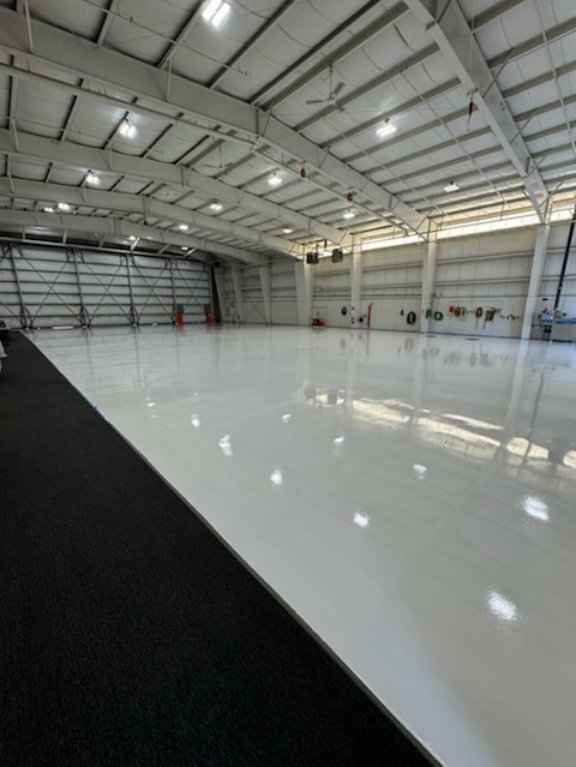Aircraft hangars demand much more than just a functional floor—they require a highly specialized surface engineered for durability, safety, and performance. One of the most critical aspects of building or upgrading an aviation facility is the flooring system. Right from resisting chemical spills to withstanding the weight of aircraft and maintenance equipment, aircraft hangar floor coatings play a pivotal role in maintaining a safe and efficient working environment.
The Unique Demands of Hangar Environments
Unlike residential or commercial spaces, hangars deal with extreme challenges. These include exposure to aviation fuels, oils, lubricants, hydraulic fluids, and even fluctuating weather conditions. Flooring in these environments must be designed to resist corrosion, prevent slippage, and carry heavy loads without cracking or warping.
This is where advanced coating technologies come into play. Floor coatings used in aircraft hangars must be not only industrial-grade but also easy to maintain, non-reactive, and resistant to fire hazards. Durability and resilience are non-negotiable.
Material Science Meets Engineering
The foundation of a hangar’s flooring system lies in the science of materials. Most modern hangar floors are constructed using high-performance epoxies or polyurethanes. These materials are engineered to offer a seamless, impermeable barrier against liquids and contaminants. Unlike traditional concrete that can absorb oils and deteriorate over time, these coatings extend the life of the flooring and improve operational safety.
Temperature extremes are also a factor. Hangar floors are often subject to thermal cycling, especially in regions with hot summers and cold winters. Quality coatings can expand and contract without cracking, ensuring a longer lifespan and reduced maintenance costs.
Load-Bearing Capacity and Surface Integrity
Airplanes are heavy. Add to that the weight of maintenance vehicles, lifts, and tools, and the flooring system has a massive load to support. The best systems are those that distribute weight evenly and retain their surface integrity under pressure.
Additionally, hangar operations involve a lot of foot traffic and wheeled equipment. The floor must remain smooth, level, and free from hazards like chips or uneven surfaces that could pose safety risks. This is where epoxy floor contractors bring their expertise in both installation and surface preparation to ensure longevity and smooth functionality.
Chemical and UV Resistance
One of the biggest threats to any industrial floor is chemical exposure. In hangars, this includes jet fuel, brake fluid, and various solvents—all of which can damage unprotected concrete. High-quality coatings form a protective layer that repels these substances, preventing deterioration and staining.
Many hangar floors are also partially exposed to sunlight, especially when large doors are open. UV radiation can break down certain materials over time, but the right topcoat—often part of a multi-layer system—offers resistance to fading, chalking, and surface degradation.
Safety and Compliance Standards
Safety in hangars is governed by both aviation and occupational health standards. Flooring systems must be slip-resistant, especially in wet conditions. Anti-slip textures or additives can be included in coatings to enhance grip without compromising cleanliness.
Compliance with FAA and OSHA standards is critical. Professional contractors ensure the right thickness, curing time, and material choice are in place to meet or exceed these regulations.
Conclusion: Choose Gnu Garage for Your Hangar Flooring Needs
When it comes to delivering specialized flooring systems for aviation environments, Gnu Garage stands out as a trusted name. Their in-depth understanding of materials, compliance requirements, and technical installation makes them the ideal choice for both small private hangars and large-scale aviation facilities. Whether it’s enhancing durability, improving safety, or meeting strict industry standards, their commitment to quality ensures your hangar floor is engineered for excellence.

